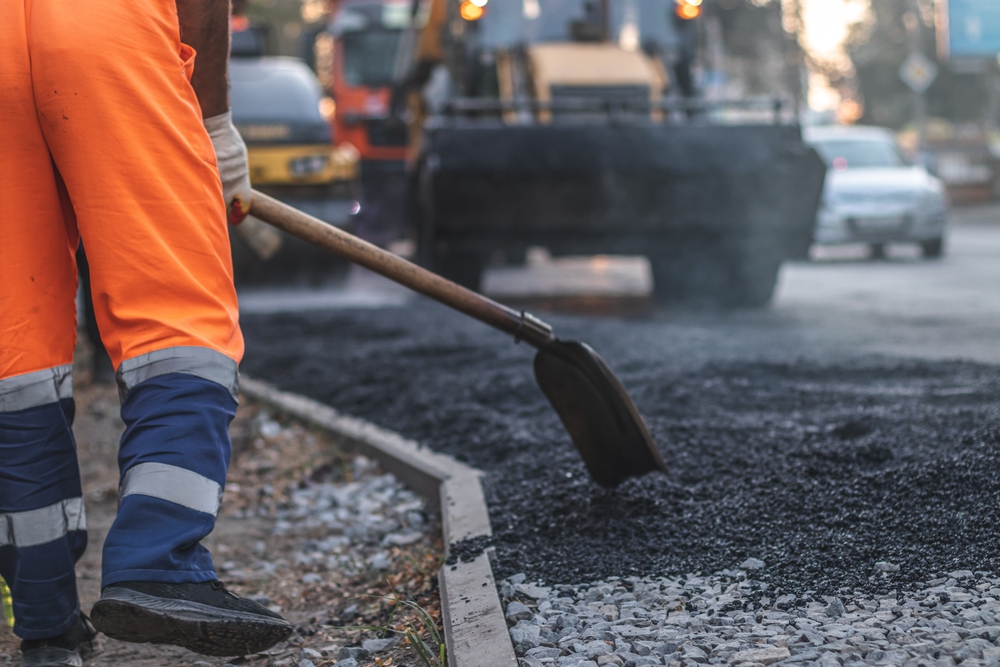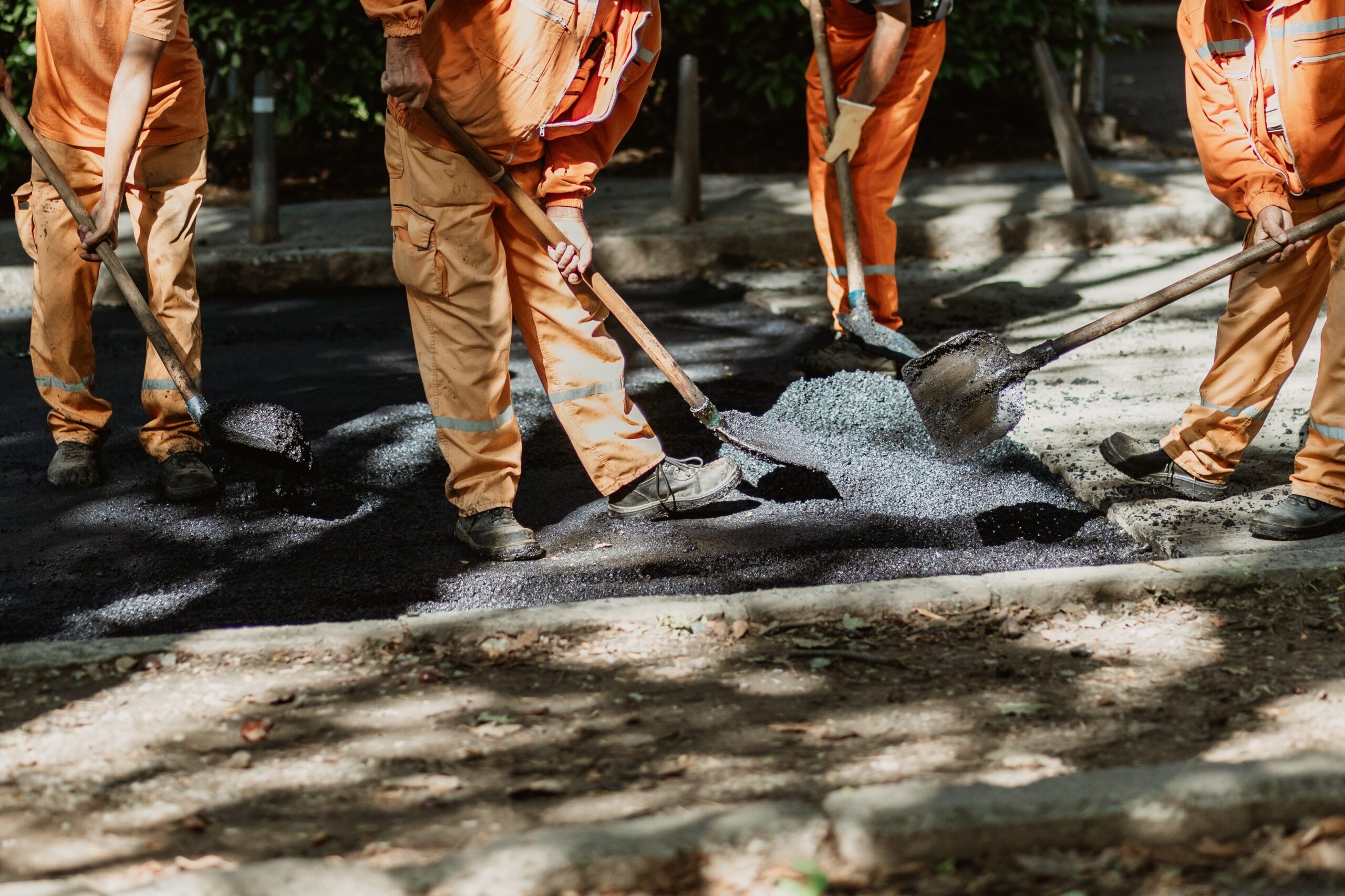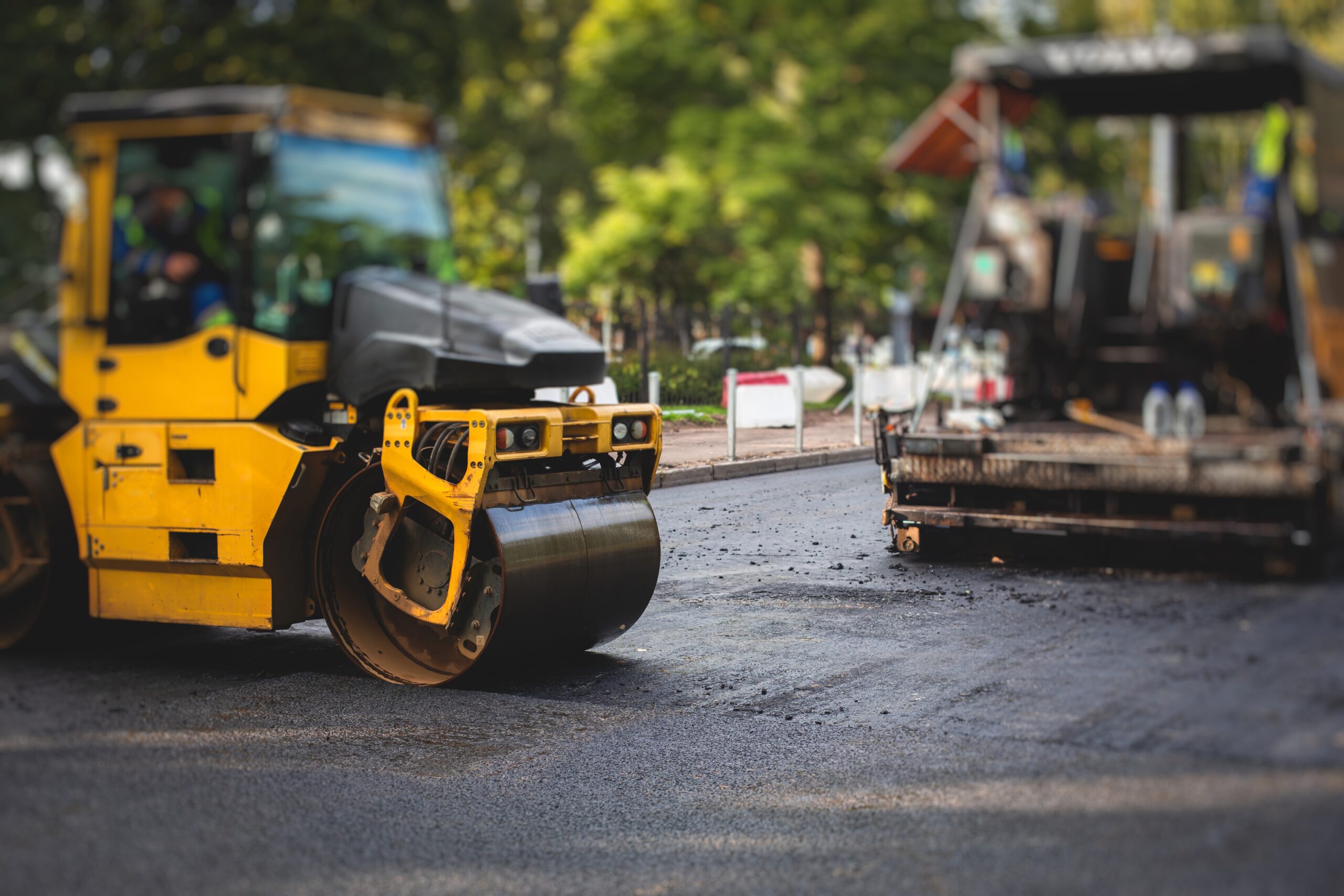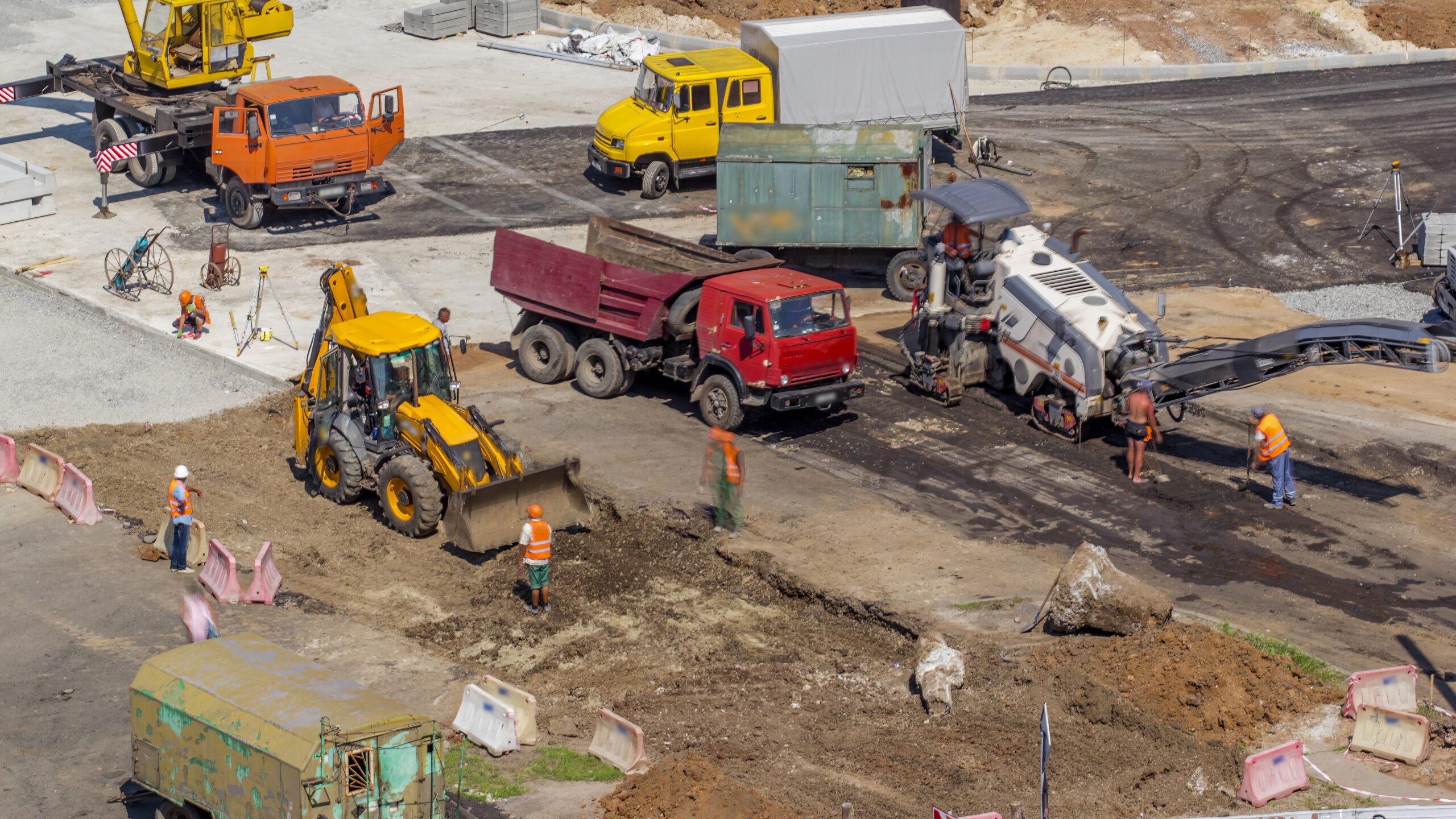
When it comes to worn or damaged concrete, property owners are often left asking the same critical question: Should I repair this, or is it time for a complete replacement? While minor issues can often be addressed with a surface-level fix, deeper damage, safety concerns, or code compliance requirements may make replacement the smarter investment.
At Asphalt Coatings Company, we help you determine what your concrete truly needs, no guesswork, no unnecessary costs, just lasting solutions.
Understanding the Difference – Concrete Repair vs. Replacement
Before determining the best course of action for your concrete surface, it’s essential to understand what “repair” and “replacement” actually entail. These two approaches differ significantly in cost, process, durability, and impact.
What is Concrete Repair?
Concrete repair focuses on treating specific areas of damage without disturbing the entire slab. This may include sealing surface cracks, patching chipped or crumbling sections, filling joints, or applying a fresh overlay to restore appearance and function.
It’s especially effective for addressing localized wear, weather-related deterioration, or early-stage damage before it spreads. Because the structural integrity of the slab remains intact, mainly, repair is a cost-effective option for minor or cosmetic issues. It can often be completed in just one or two days, with minimal disruption to surrounding areas.
What is Concrete Replacement?
Concrete replacement is a full-scale process that involves demolishing and removing the existing slab, inspecting and correcting any subgrade deficiencies, and then pouring new concrete to meet updated structural and code requirements.
This method is typically necessary when the damage is structural, widespread, or caused by underlying issues such as base erosion, heaving, or deep cracking that compromises the slab’s overall stability. While it requires a larger upfront investment in labor, materials, and time, replacement offers superior performance, longer lifespan, and greater peace of mind, especially in high-traffic or safety-sensitive areas where reliability matters most.
Visual & Structural Signs That Repair Won’t Be Enough
Small surface cracks or flaking may not require anything more than a quick fix. However, there are visible and structural clues that suggest your concrete is beyond repair, and trying to patch it may only delay the inevitable.
Major Indicators That Point to Replacement
- Scaling and Surface Crumbling: This typically indicates significant weather-related damage or inadequate initial curing.
- Spalling and Rebar Exposure: When internal steel is exposed, corrosion begins to weaken the concrete.
- Heaving and Vertical Shifts: Caused by freeze-thaw cycles or expanding soils, this leads to uneven surfaces and trip hazards.
- Widespread or Deep Cracking: When cracks intersect or shift, they may indicate a structural compromise.
- Pooling Water and Subsurface Voids: Drainage problems that lead to erosion beneath the slab often require complete replacement to address the issue.
Assessing Severity – Surface Damage vs. Deep Structural Issues
What appears to be a simple crack on the surface may conceal much more serious damage beneath. It’s crucial to thoroughly assess the full extent and nature of the issue before making a repair-or-replace decision.
When Damage Runs Deeper Than It Looks
- Subgrade Erosion: Water movement or poor compaction beneath the slab can cause instability and settlement.
- Rebar Corrosion: Moisture penetration can rust internal steel, leading to expansion and cracking from within.
- Capillary Action: Moisture wicking upward through the concrete matrix weakens the slab from the inside out.
- Joint Failure: Damaged control joints lead to poor load transfer and localized slab collapse.
Delamination and Voids: Separation between layers or within the slab body often signals poor installation or long-term wear.
Cost Analysis – Short-Term Fix vs Long-Term Investment
At first glance, repairs are the more economical choice. However, when you factor in performance, longevity, and maintenance cycles, replacement often proves to be the more financially prudent move.
Concrete Repair vs. Replacement – Cost Comparison Over Time
| Factor | Repair | Replacement |
| Initial Cost (per sq. ft) | $5–$10 | $8–$15 |
| Lifespan Added | 2–5 years | 20–30 years |
| Maintenance Frequency | Every 2–3 years | Every 8–10 years |
| Structural Integrity Impact | Low to Moderate | High |
| ROI Over 10 Years | Lower due to repeat repairs | Higher due to long-term durability |
When Replacement Becomes the Cost-Saving Option
If you’re investing in repairs every few years, your ongoing costs may soon exceed the cost of a single, well-executed replacement. While patching might seem more affordable in the short term, repeated labor, material expenses, and downtime can quickly add up, especially for surfaces that endure heavy traffic or harsh environmental conditions.
Over time, you may find yourself paying more to keep a failing slab alive than you would to replace it entirely. Slabs in critical areas, such as driveways, loading docks, pedestrian walkways, or ADA-accessible routes, are better off being rebuilt to avoid not only frequent service disruptions but also potential safety hazards, legal liabilities, and long-term structural issues.
A properly replaced slab offers lasting performance, fewer maintenance headaches, and better overall value.
Usage, Function & Safety Considerations
Beyond visible damage, the way your concrete is used also plays a vital role in determining whether to repair or replace it. Surfaces that handle high traffic or serve sensitive functions often demand more robust, permanent solutions.
Why Function Dictates Replacement Over Repair
- ADA Walkways: Minor irregularities can violate accessibility codes, requiring slab-level fixes.
- Loading Zones and Vehicle Access: Heavy loads cause flexing, cracking, and base failure.
- Public Pathways: Crumbling or uneven concrete creates trip hazards and legal risks.
- Industrial Surfaces: Forklift traffic and vibrations can quickly wear out patched areas.
- Ramps and Inclines: Uneven repair can affect drainage and create clearance issues.
Local Regulations & Code Compliance
Even if your concrete is functional, it may still fail to meet local code requirements. Municipalities and inspectors may require replacement if the surface fails to meet safety or environmental standards.
Permits, Codes, and What They Mean for Your Concrete
- Building Permits: Some cities require permits for large-scale concrete repair or replacement.
- ADA Compliance: Slope, clearance, and texture issues often require full slab correction.
- Drainage Regulations: Regrading may be necessary to comply with water runoff codes.
- Zoning Laws: Certain zoning overlays dictate the material type and finish in visible areas.
- DOT Guidelines: Public walkways and parking areas may be subject to stricter Department of Transportation criteria.
When Concrete Repair Is Enough
Not all damage means disaster. There are numerous situations where repair is perfectly acceptable, and even preferable when handled appropriately.
Situations Where Repair is Sufficient
- Hairline Surface Cracks: Sealing can prevent water intrusion and freeze-thaw expansion.
- Surface Flaking or Staining: Resurfacing restores appearance without complete removal.
- Isolated Settling: Concrete leveling or slab jacking can correct minor unevenness in the concrete.
- Localized Spalling: Patching compounds can restore minor surface defects.
- Edge Damage: Repairs can reinforce corners or joints without touching the whole slab.
Techniques We Use – Asphalt Coatings Company’s Process
At Asphalt Coatings Company, we take pride in delivering lasting solutions based on in-depth evaluation, precision planning, and skilled execution. Here’s how we handle your concrete from start to finish.
How We Diagnose and Deliver the Right Solution
- Evaluation & Core Sampling: We assess thickness, composition, and subsurface conditions.
- Damage Mapping: Cracks, voids, and delaminations are digitally charted for planning purposes.
- Repair or Replacement Plan: We clearly explain your options and provide transparent cost estimates.
- Execution Phase: Whether it’s patching or full replacement, we manage every detail, from dustless demolition to curing.
- Final Quality Inspection: We ensure code compliance, durability, and visual appeal.
Our goal is not just to fix the problem but to future-proof your property.
Frequently Asked Questions
What happens if I continue to repair concrete that needs replacement?
It leads to escalating maintenance costs, recurring failures, and increased risk of injury or property damage.
Can decorative concrete be repaired instead of replaced?
Yes, if the issue is cosmetic. However, deeper cracking or delamination usually requires complete replacement to restore both form and function.
How do I know if drainage issues are affecting my concrete?
Signs include water pooling, cracking near the slab edges, and rapid deterioration after rain. An inspection can confirm if drainage corrections are needed.
What’s the best season to schedule concrete replacement?
Spring through early fall is ideal. Mild weather ensures proper curing and reduces delays.
How long does a concrete replacement project take?
Most small-to-medium projects are completed within 3–7 days, including demolition, pouring, and curing. Heavy-duty surfaces may take longer to cure fully.
Let’s Fix It Right the First Time
Don’t waste time and money on quick fixes that won’t last. At Asphalt Coatings Company, our concrete experts are ready to evaluate your surface, determine the best course of action, and deliver results that stand the test of time. Whether it’s a sidewalk, parking lot, loading bay, or warehouse floor, we offer the expertise and tools to get it done right.
Call now or request a free site evaluation to determine if your concrete needs a patch or a complete replacement. We proudly serve commercial, industrial, and municipal clients across the region with honesty, precision, and a proven track record of performance.



